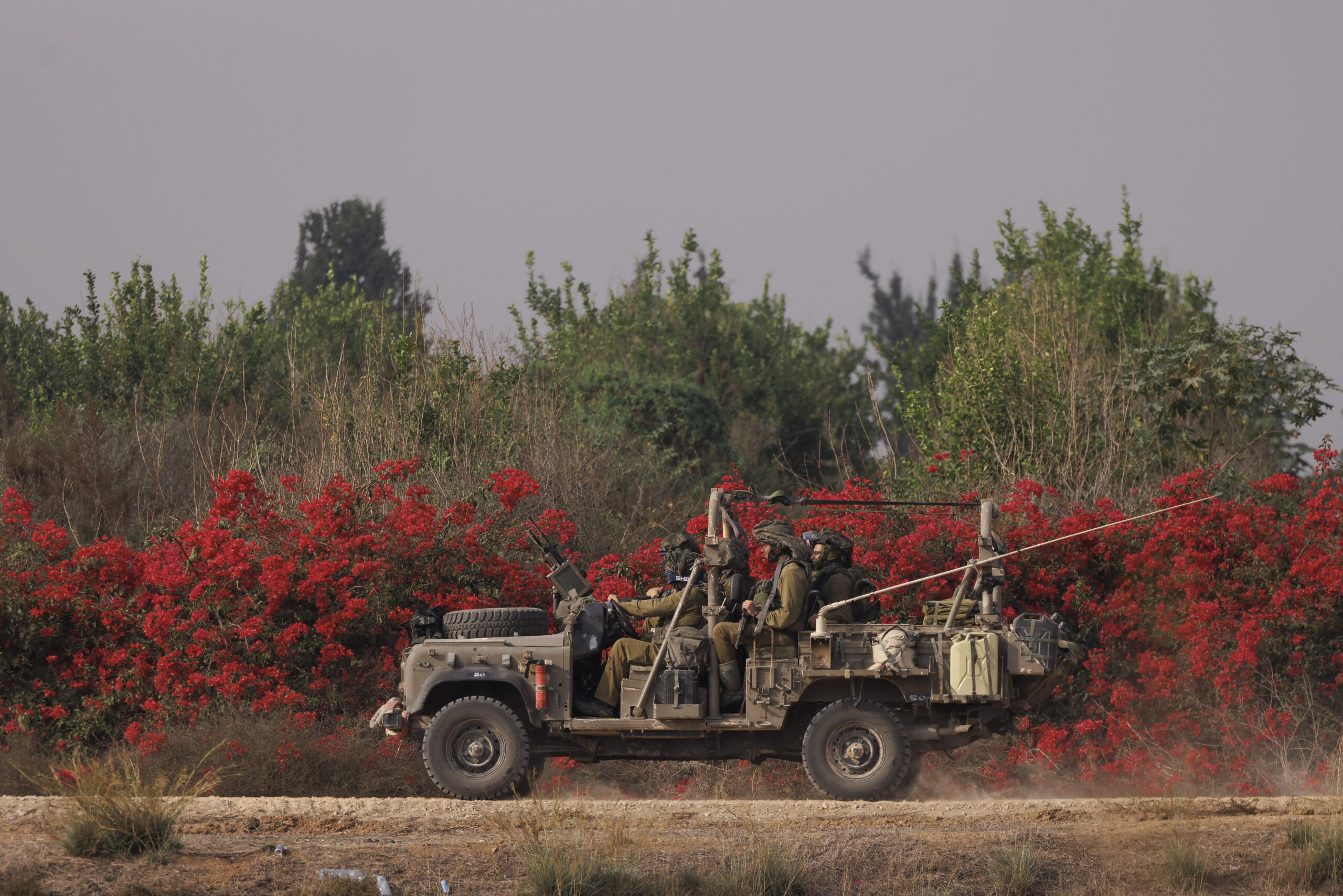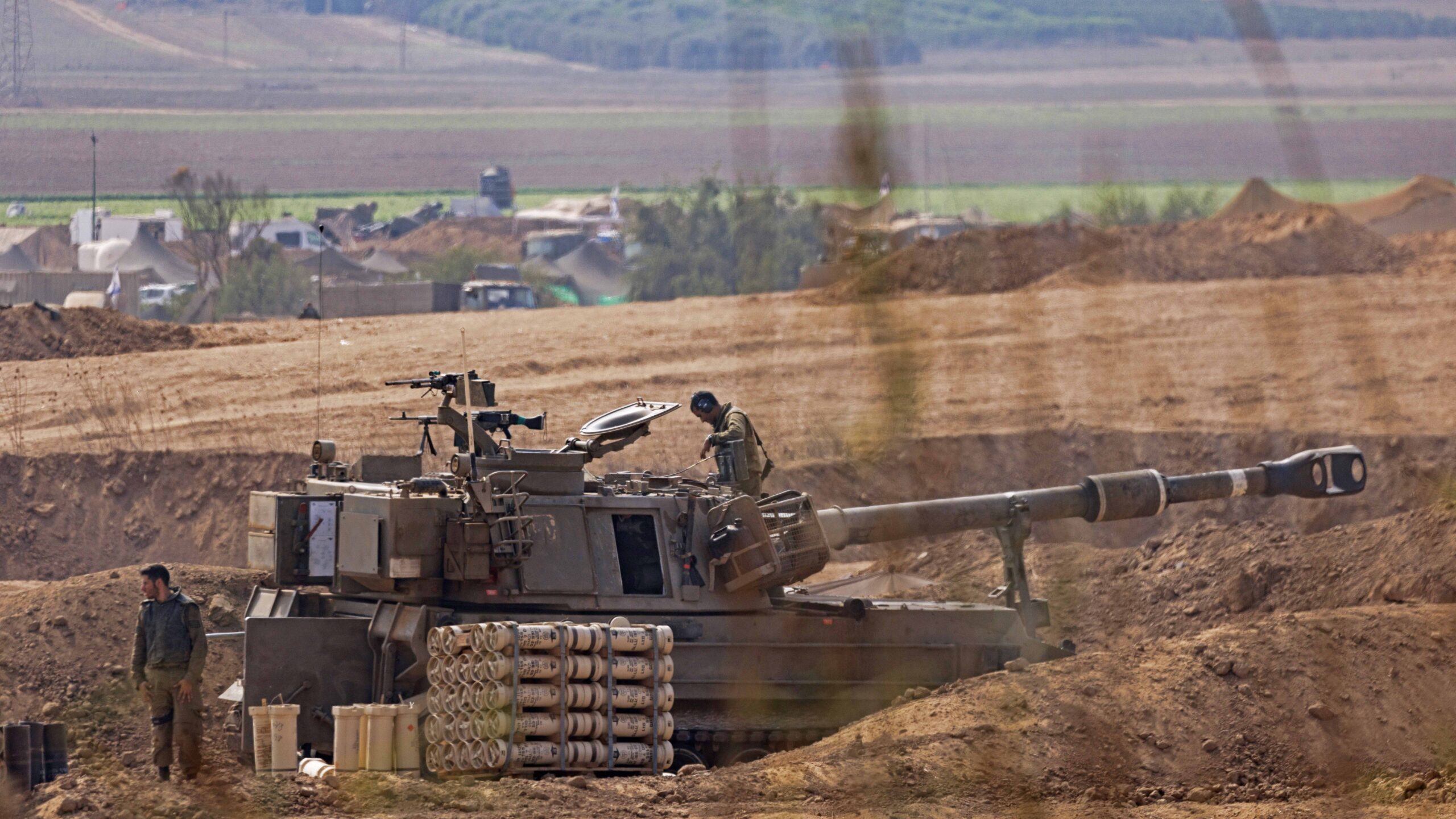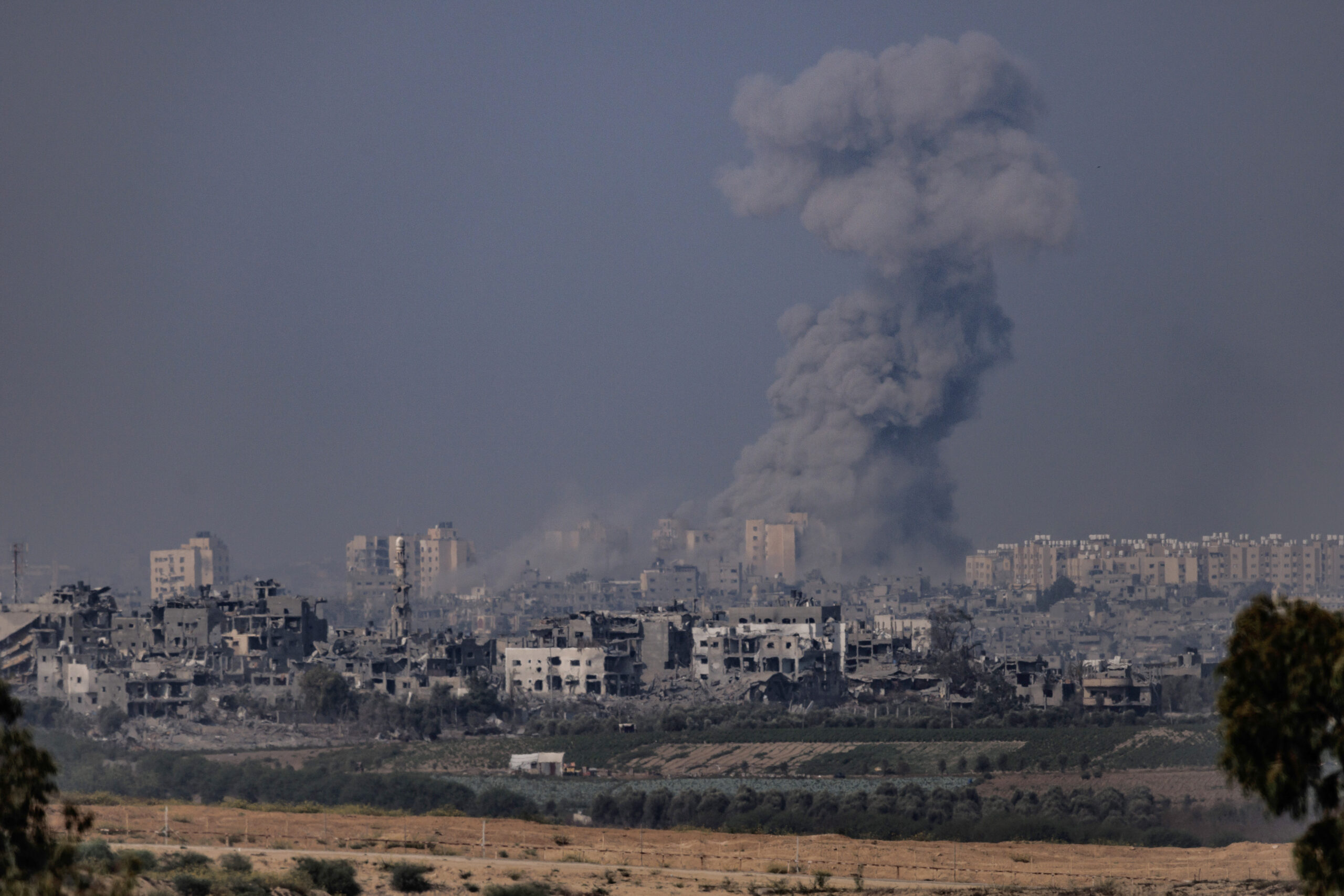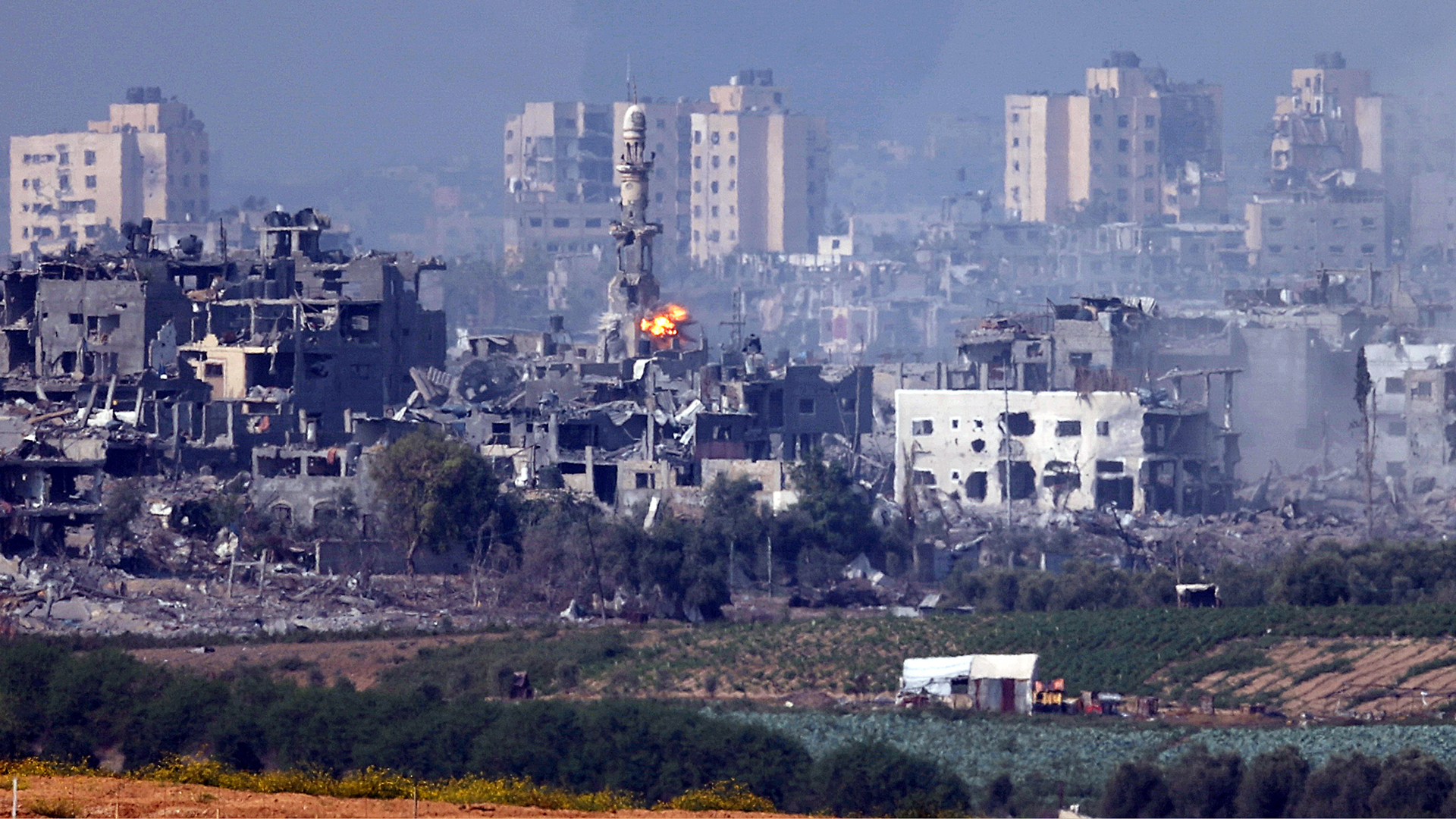Bombs and artillery shells continue to rain down on Gaza, in what have been reported as the heaviest bombardments there since the start of the current conflict. At the same time, there have been exchanges of fire between militant fighters and Israeli forces overnight. In a break from previous Israel Defense Forces (IDF) incursions, this time, Israel says that some of its troops and armor have remained in Gaza, as the opening actions of a large-scale ground offensive roll forward.
This evening, local time, Israeli Prime Minister Benjamin Netanyahu declared: “This is the second stage of the war.” He added: “Our calls are very clear — to destroy the military and government ability of Hamas and return the victims home.”
“The war inside Gaza is going to be long,” Netanyahu warned. “This is our second independence war. We’re going to save our country. We’re going to fight in the air, ground, and we are going to fight and win.”

Clashes on the ground have taken place in at least three locations in the Gaza Strip in the last 24 hours, involving local fighters engaged with IDF armored vehicles and infantry.
“The forces are still on the ground and are continuing the war,” said IDF spokesperson Rear Adm. Daniel Hagari, although no further details were provided about what those forces are now doing.
Yesterday, Rear Adm. Hagari said that IDF ground forces were “expanding their activity” and “acting with great force … to achieve the objectives of the war.”
In one video released today by the IDF, an extensive column of Merkava tanks is seen crossing a flat and open sandy area of Gaza, using their main guns to engage built-up areas in the distance.
Reports coming out of Gaza itself suggest that the heaviest clashes have been taking place in the area of Beit Lahia and Beit Hanoun, in the north of Gaza; as well as to the east of the Bureij refugee camp in central Gaza; and finally to the east of the southern city of Khan Younis.
A statement from Hamas’s military wing Friday confirmed that it was fighting the IDF on the ground.
“Netanyahu and his defeated army will not be able to achieve any military victory,” Hamas said in a statement released this morning.
Meanwhile, the Hamas media center has described heavy nighttime clashes with Israeli forces at several locations, including what it said was an Israeli incursion east of the Bureij refugee camp.
The militant organization has also claimed that the IDF’s three-pronged attack was a failure, with heavy losses sustained by the Israelis. These accounts have not been independently confirmed, however.
Journalist Julian Borger, from the Guardian, provided the following account from Gaza:
“By 10:00 a.m. the heavy fog over Gaza has burned away and from a hillside in the southern Israeli town of Sderot, it is possible to see into Beit Hanoun, northern Gaza, about 5km [3 miles] away.
Hamas said overnight its fighters were in a battle with the Israel Defence Forces, and that battle still appears to be going on. Heavy machine gun fire can be heard sporadically from inside Gaza, together with bigger shell bursts, most likely tank fire.
To the south of this hill, you can hear the crump of the big self-propelled howitzers the Israelis have dug into the surrounding farmlands. Occasionally, a warplane can be heard high above and an airstrike sends a big white cloud of smoke up on the horizon. The apartment buildings in the eastern side of Beit Hanoun, nearest the Israel border and Sderot, are in ruins.
Behind them is the Jabalia refugee camp, which has also come under heavy fire. The pounding of the city is steady, but less intense than on Friday night, when it was at its heaviest between 8:00 p.m. and 10:30 p.m., quite possibly preparing the way for an incursion. An IDF officer predicted it would escalate again when the sun sets tonight.”

According to the IDF, around 100 jets have struck 150 underground Hamas targets in Gaza. Videos taken on Saturday morning indicate that the bombardment continued into the daylight hours.
An IDF spokesperson said that the latest airstrikes — which began after dark on Friday — hit Hamas targets including tunnels, underground combat areas, and underground terrorist infrastructure. These tunnels are known to Israeli military planners as “the metro.”
“We attacked above the ground and underground, we attacked terror operatives of all ranks, everywhere,” the Israeli Minister of Defense, Yoav Gallant, said in a video statement. “The instructions for the forces are clear: the operation will continue until a new order.”
The problems posed to the IDF by the extensive tunnel networks in Gaza are something we have discussed before, as well as some of the potential military options available to counter them.
The IDF today also released a video that it says shows captured Hamas militants under interrogation, who admit that the organization makes use of the areas under a hospital in Gaza.
The militant in the video below appears to confirm that Hamas uses a basement at the Al Shifa hospital in Gaza City to hide. “In Shifa, there is a basement floor. A big place where they hide,” says the man, described as a member of an elite Hamas unit, said.
Especially challenging is the fact that Hamas appears to be using the tunnel network to hold some of the more than 200 hostages that it took from Israel during its initial incursion beginning October 7. One of the hostages to have been released, 85-year-old Yocheved Lifshitz, confirmed that she and other captives were held deep inside tunnels.
Other airstrikes are claimed to have killed Asem Abu Rakaba, said to be responsible for Hamas’s drones, paragliders, aerial detection, and defense capabilities. The IDF further says that he was involved in planning the October 7 attack on Israel and that he “commanded the terrorists who infiltrated Israel on paragliders and was responsible for the drone attacks on IDF posts.”
Since internet and mobile services were almost entirely cut off in Gaza as of yesterday, the flow of information out of there has been much reduced, something that we predicted would happen ahead of any major ground offensive.
According to the Palestinian telecom provider, Paltel, there now exists a “complete disruption” of internet, cellular, and landline services, although some satellite phones continue to function.
Nevertheless, media camera positions located outside of Gaza, in both Israel and Egypt, continue to provide footage of heavy airstrikes and artillery bombardment.

On the ground in Gaza, meanwhile, reports that have emerged depict a chaotic situation. Undoubtedly, the reduced communications will deeply complicate the efforts of paramedic teams as they try to recover the dead and injured. This is on top of the problems caused by the power outages, as well as shortages of fuel, water, food, and other essentials. The latest reports suggest that basic services are collapsing to such a degree that many residents are now exposed to the threat of widespread disease.
According to an account from journalist Rushdi Abualouf, working for the BBC in Gaza: “There was a huge bombardment in the north of Gaza Strip [overnight] on a scale we’ve never seen before.”
“At the hospital here, ambulance drivers told me they couldn’t communicate with anyone, so they were just driving in the direction of the explosions,” he added.
“There’s been panic everywhere — even here in Khan Younis where the bombing was less — as people try to reach family members in other areas to check they are safe, but the phones have been cut off.”
The IDF continues to urge residents of the northern Gaza Strip to evacuate to the south. This is a call that has been made persistently since Israel launched military operations there, but it has been hampered by Hamas calling upon the population to stay put. Outside of the leaflets, how exactly the population of Gaza is supposed to receive Israel’s messages now is unclear.
All of this activity is being taken as still an early phase of what will be a sustained ground campaign. The Israeli Minister of Defense, Yoav Gallant, has previously said that the immediate focus of the IDF on the ground is to destroy “pockets of resistance,” but he has also warned that destroying Hamas’s network of tunnels “will take a long time.”
At the same time, Hamas is continuing its campaign of rocket attacks against Israel, with the video below showing the aftermath of a rocket that hit a home in a suburb of Tel Aviv.
Of course, exactly how a more sustained, high-intensity ground offensive might look is very much unclear for now — not least how Israel will measure the full defeat of Hamas that it says it aims for.

Aside from questions about how the next phase of the war in Gaza might unfold, there is the specter of a wider conflict in the region, which has the potential to further draw in Hezbollah in Lebanon, as well as Iran — the major backer of both Hamas and Hezbollah.
On the international front, the worries about an impending conflict on a larger scale have seen further calls for a ceasefire between the IDF and Hamas. Late on Friday, the United Nations General Assembly called for an immediate and sustainable humanitarian truce in Gaza, with a vote on the issue passed with 120 in favor, 14 against (including the United States), and 45 abstaining.
According to the latest unconfirmed figures provided by the Palestinian Health Authority, the death toll in Gaza has risen to 7,703 since the IDF began its bombardment on October 7. Of that figure, 3,500 are said to be children.
Around the world, pro-Palestinian demonstrations have continued this weekend, including in Turkey. In Istanbul this morning, Turkish President Recep Erdogan told a large pro-Palestinian rally that he considered Israel an occupier and once again claimed that Hamas is not a terrorist organization.
“The main culprit behind the massacre unfolding in Gaza is the West,” Erdogan told the crowd. “If we leave aside some conscientious voices… the massacre in Gaza is entirely the work of the West.”
Erdogan also said that Israel was behaving like a “war criminal.”
The dramatic events in Istanbul have been met with a predictable response from Israel, as the following tweet from the Israeli Minister of Foreign Affairs, Eli Cohen, makes clear:
In the United Kingdom, too, many thousands took to the streets of London for a pro-Palestinian rally today, with similar demonstrations taking place in Manchester, Glasgow, Belfast, and other cities.
Over on X, formerly known as Twitter, owner Elon Musk is again courting controversy with this recent tweet, seen below. At the same time, Musk said today that SpaceX’s Starlink satellite internet constellation will support communication links in Gaza with “internationally recognized aid organizations.”
This is a quickly developing situation, we will continuously update this post as new information becomes available.
Update, 4:45 p.m. EST: The aircraft carrier USS Dwight D. Eisenhower has arrived in the Mediterranean, the warship having been spotted today passing through the Strait of Gibraltar.
A week ago, U.S. Secretary of Defense Lloyd Austin confirmed that he had redirected the USS Dwight D. Eisenhower Carrier Strike Group to the Central Command area of responsibility. This carrier strike group is in addition to the USS Gerald R. Ford Carrier Strike Group, which was already operating in the eastern Mediterranean.
Having two carrier strike groups in the Mediterranean will “further increase our force posture and strengthen our capabilities and ability to respond to a range of contingencies,“ Austin said at the time.
Update, 5:00 p.m. EST: There are some signs that the bombardment of Gaza tonight by the IDF is just as heavy, if not more intense, than last night. The following video which was taken on the Gaza/Israel border by Fox News Foreign Correspondent Trey Yingst gives some idea of the ferocity of the attacks taking place right now.
Update, 5:15 p.m. EST: In response to Elon Musk’s announcement that Starlink satellite services will be made available to internationally recognized aid organizations in Gaza, Israel’s Communications Minister Shlomo Karhi has said that his office “will cut any ties with Starlink.”
In a tweet this evening, Karhi said: “Israel will use all means at its disposal to fight this. Hamas will use [Starlink] for terrorist activities. There is no doubt about it, we know it, and Musk knows it. Hamas is ISIS. Perhaps Musk would be willing to condition it with the release of our abducted babies, sons, daughters, elderly people. All of them!”
Israel, too, has seen protests in the last few hours, with anti-war protestors gathering this evening outside the Israeli defense ministry in Tel Aviv. Reports from the scene suggest that a group of left-wing activists succeeded in blocking a road near the ministry, drawing a police response.
Contact the author: thomas@thedrive.com
